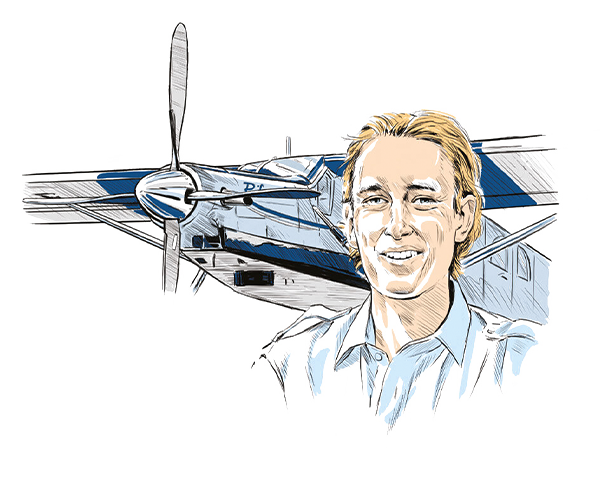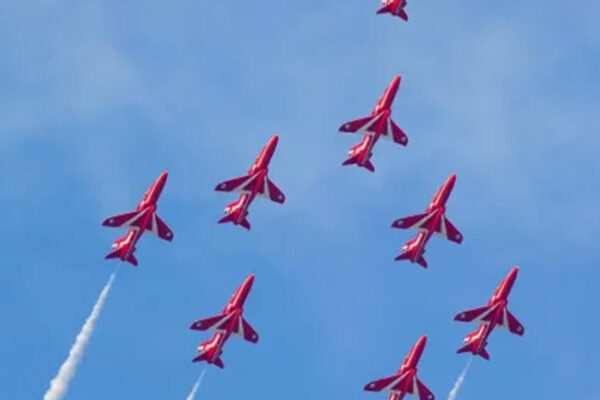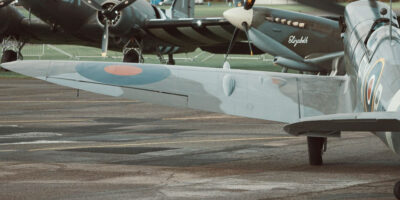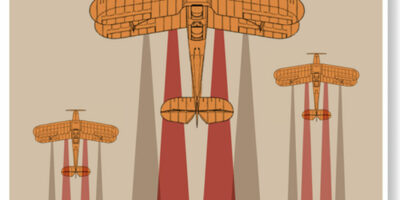I am sure many of you would have seen the video of a student pilot in Canada getting things very wrong while trying to go around following a botched landing. If not, you can see the video here. To summarise, the student was doing circuits, and on the landing featured in the video he touches down, but starts to veer off to the left of the runway. He then panics and applies full throttle along with right rudder in an attempt to steer the aircraft back into the middle of the runway for the go-around. Unfortunately he applies too much right rudder and leaves the runway to the right while applying full up elevator then full right aileron on the control column. Maxed out, he continues across the grass in this configuration before crashing into a hangar. He only suffered minor injuries but the aircraft was a write-off.
As humans, when we are maxed out we will always revert to what we know or have learned in the past. In the video you can see the student trying to steer the aircraft by turning the control yoke as if steering a car because, as a student, he is reverting to what he knows best. His mind is using what little capacity left to try and analyse the situation and applying what it knows. Being in a moving vehicle on the ground you can easily see why he has reverted to thinking he’s in a car – and is trying to steer the aircraft as such. I also wonder if he was pressing the right rudder pedal in an attempt to apply some braking force too, as he would on a car’s brake pedal.
Unfortunately the only real way for you to get something into your brain so that it becomes fully automatic is by repetition. You can read things in a book or watch a video as many times as you like but ultimately you need to develop muscle memory for your mind to revert to, should the need arise.
“Touch drills are a great way to imprint the muscle memory for non-normal operations”
As pilots, we are well used to running through checklists and doing things the same on each and every flight. In commercial aviation we use SOPs (standard operating procedures), which take things a step further, and I would implore all pilots to adopt this methodology. Quite simply, make sure that all the vital items, such as removing external covers or setting the QNH, you do in exactly the same way each and every time. If there is more than one way to trim the aircraft you fly, tune in the radio or even unlock a door, make sure to pick one and stick with it every single time you fly. After a relatively short while you’ll be amazed how much more spare capacity your mind has because it no longer has to think about that particular operation as much as before.
I actually employ this methodology in my daily life. When I go rock climbing I always ensure to set up my climbing harness in exactly the same way before every climb. That way, when I am 50ft up and barely hanging on with my fingertips, I can reach back with my other arm and know exactly where the piece of equipment I wanted to place is, without having to feel around or look down at my harness searching for it. It eases the ‘stress’ in a stressful situation. I was amazed how many of my friends were always fumbling around trying to locate something because they had their harnesses set up randomly each time, until I enlightened them with some aviation SOPs for climbing!
Of course there are situations that you cannot simply keep repeating in order to get them into your mind. I remember seeing the damage done to a Stearman’s aileron following a minor ground loop because the pilot had instinctively tried to bank the aircraft away from the direction of rotation. A ground loop is not a normal thing to happen, so if it does, you will be taken by surprise and revert back to doing things instinctively. If the aircraft is spinning clockwise and the nose is going to the right in a ground loop, it will be very hard not to try and push the control stick to the left to counteract this perceived banking, even though it won’t have any effect. By doing this you will put the inside wing’s aileron down, which is the wingtip that can hit the ground, and which can cause more damage to the aileron than if you just sit there and did nothing.
So how do you build instinctive reactions into your mind for use during emergency and unusual situations? Simulators are brilliant for preparing for these things in safety, but obviously they are only really readily available to commercial pilots.
However, touch drills are a great way to imprint the muscle memory for non-normal operations. The great thing about the human mind is that it is actually pretty good at learning stuff even if you’re not doing it for real and only going through the motions. A good example is that before each departure I mentally go through what I will do should the engine fail and at what speeds I will initiate those actions. By doing this each and every time, hopefully I will be able to act on them without having to think about it too much and leave some spare brain capacity to deal with the rest of the situation.
Currently dividing his time between a Cub, a Catalina… oh, and a PC-12
[email protected]







